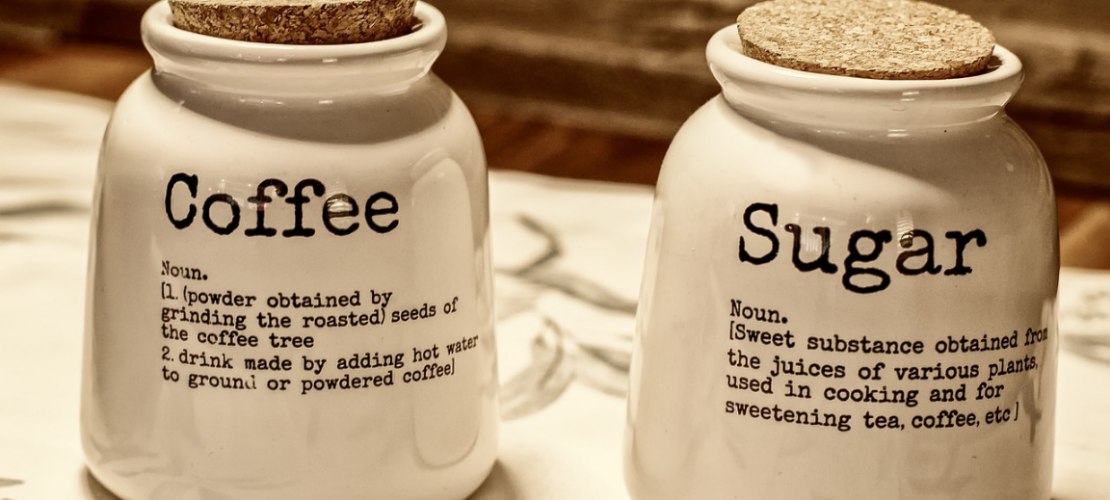
How to Write Product Descriptions that Will Pump Up Your Sales Almost Instantly
Creating a good product description isn’t just about adding a title and a short description to give information.
Instead, it’s about giving your potential customers convincing reasons why they should buy what you’re selling.
Obviously, you want to write a product description that sells, not the one that tells only. They’re not the same, if not very different.
Today, we’ll show you a success recipe for writing a high-converting product description, plus 8 tweaks to make it from good to best.
Now let’s dive it.
What is a product description?
Before jumping into the creation process, let’s figure out what exactly a product description looks like.
A product description, basically, is some pieces of content shown along with a product, which describes the features, benefits, etc. of that item. It’s also considered as a marketing copy that explains what makes it stand out from other similar items and why it’s worth purchasing.
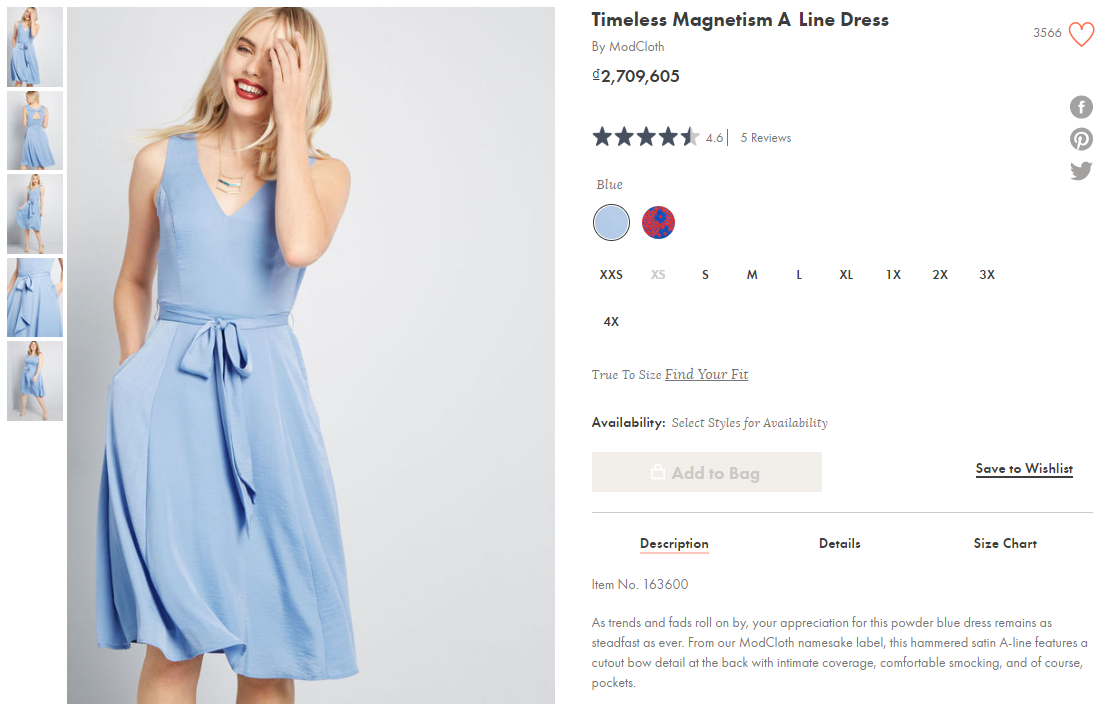
Source: Modcloth
In general, a product description should give answers to these 6WH-questions:
- Who should use the product? In other words, the target audience. The product can be for women, men, those aged 18 – 24, those who love pets, or any other defined groups of people.
- What are the product’s basic features? For example, technical specifications, dimensions, functions.
- Where would a customer use the product? Should it be used indoors or outdoors, in offices or in homes?
- When should a customer use the product? Is it meant to be used during a certain time of day or for a particular type of occasion?
- Why is this product more useful or better than its competitors? Is it thanks to its quality, value, facilities? Think about the benefits that will speak to your ideal customers.
- How does the product work? If you’re selling electronic products or anything with moving parts, you should explain how to use it.
The description of Stretch & Seal Lids on Inspire Uplift is a good example of applying these. Take a look:
They’ve done a good job of making the product description detailed, so it’s difficult to fit into one static image.
Below is the first part, which gives shoppers an overview of Stretch & Seal Lids, from what it is to when they should use it. The brand uses powerful words and phrases to emphasize the outstanding characteristics of the product like “delicious”, “garden fresh”, “durable and safe”, etc.
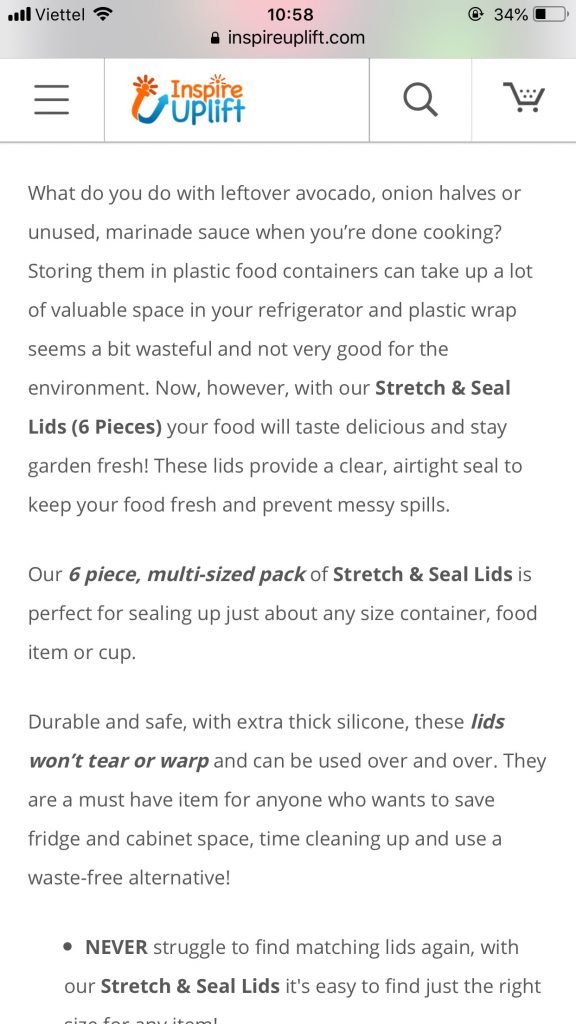
The second part shows the benefits of Stretch & Seal Lids. Each advantage comes with a detailed description, which helps shoppers know exactly what they’ll get if they purchase the product.
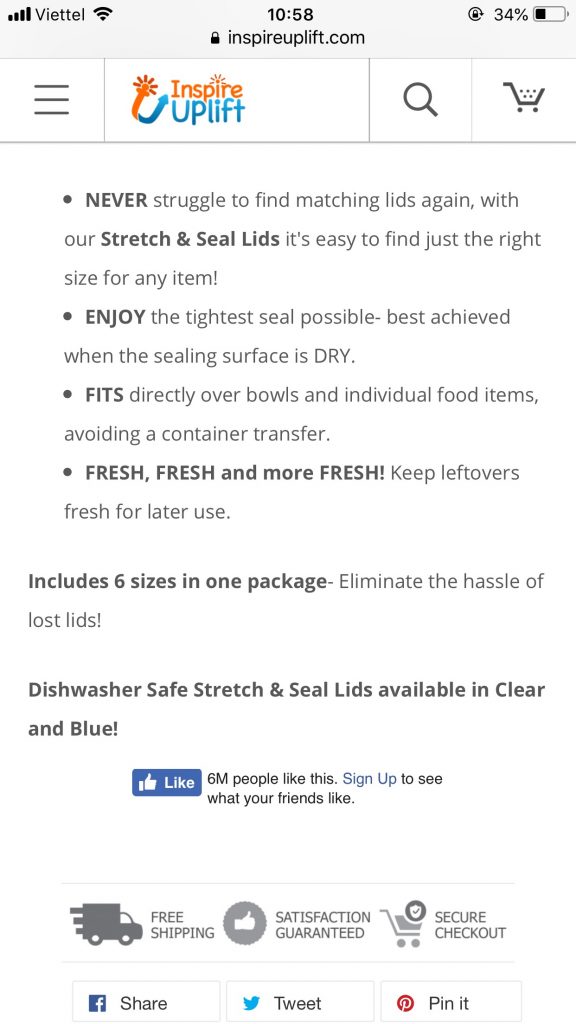
Inspire Uplift capitalized important words, made them bold, and used bullet points, so their product description is very scannable. However, a description doesn’t always have to go into too much detail. Provided that your description clarifies what the product does and why someone should buy it, it can be short.
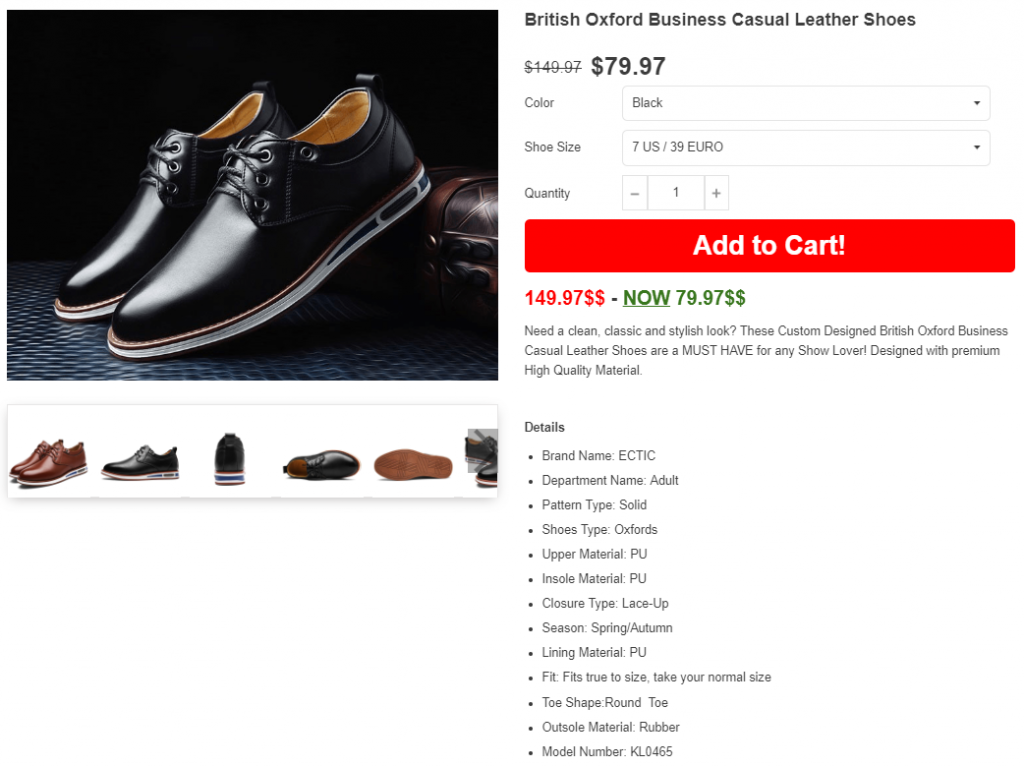
Source: Flawless Value
Now, let’s move on to the next part to learn how to generate a description for your product.
Steps to creating a good product description
It’s one thing to know what a product description is, it’s another thing to make a good one. The description on your product page needs to be persuasive and clearly communicate the value of your product. So, how do you pitch it effectively?
The best advice is that you collect all the details about your product, pick the gold nuggets that can get the product stand out, and finally use them to write your desired product description.
Step 1: Collect all the product details
Simply open a blank document, then copy and paste everything about your product you’ve found into it. There are three sources to find information about a specific product, as shown below:
#1 Ask for your supplier. This is the easiest and quickest way to find product details. Just go to the product page of your supplier on AliExpress, eBay,.etc, and you’ll see a description like this:
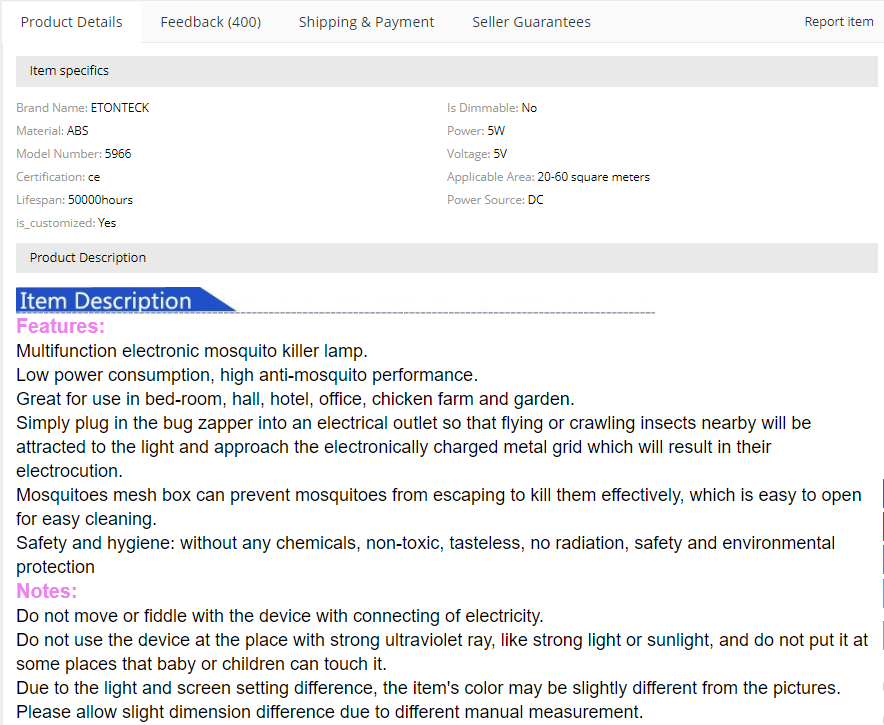
Source: AliExpress
#2 Check other shopping sites like Amazon. This way, you may have some more insights for the product description you’re writing.

Source: Amazon
#3 Check other stores that are selling the same product as yours. You can do a reverse image lookup on Google for one of the product images.
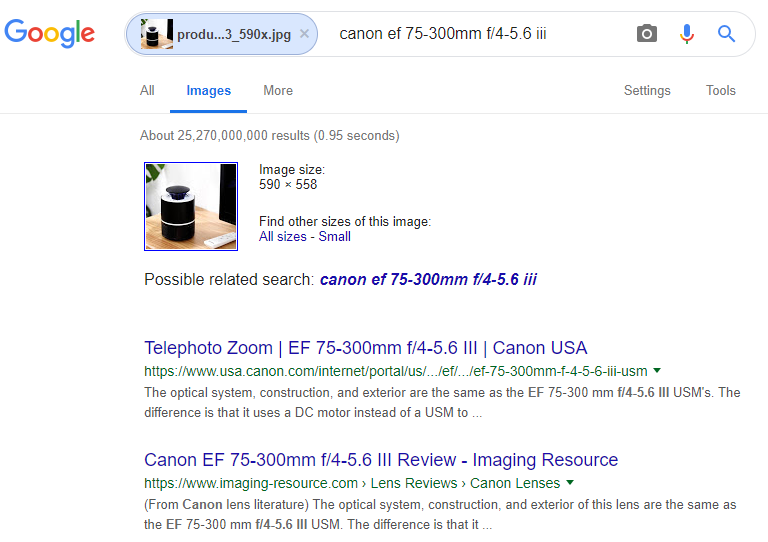
Or, you can enter the name of the product along with something like “myshopify” or “shopify” at the end. Then, click a few results, and see what else you might be missing.
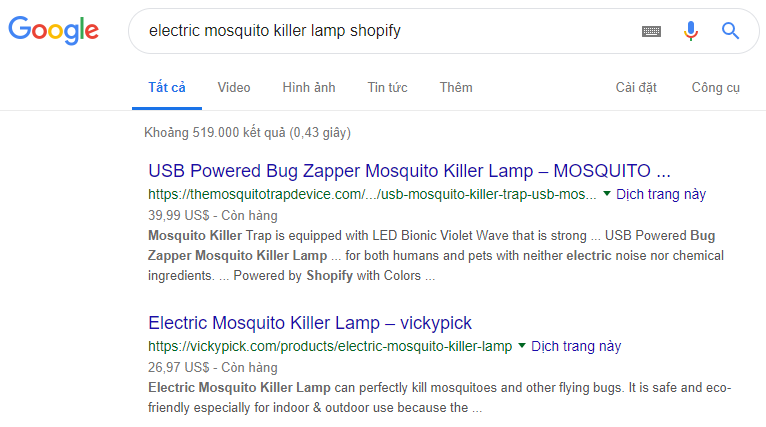
Using these ways, you can find all the information about a product and come up with ideas which will help you become better or different than your competitors. Once you’re finished with this, take the next step to analyze everything you’ve found.
Tip: You should take this approach with every product you want to dropship. It isn’t as time-consuming as it might seem at first, and it’ll multiply the positive impact of your product pages.
Step 2: Get all the benefits from the product
When you look at all the product details you listed, some of them may be confusing and even irrelevant to your potential customers. That’s why you need to take time to choose the gold nuggets which can be included in your description. Not all of the information should be shared.
When we say “gold nuggets”, we don’t mean every feature and spec of a product – we are talking about its BENEFITS.
As a store owner, you’re understandably excited to show all of the best and most unique characteristics that your product has. Your potential customers, however, isn’t necessarily interested in them. Instead, they care more about how your product (more specifically, its features) can help them solve their problem – in other words, their focus is on benefits.
All things considered, what you need to do here is translating your product features into benefits. If the feature is a 1.75-ounce candle, the benefit is that it can be used in small spaces like a nightstand or an end table. If the feature is non-chemical ingredients, the benefit is that it can be safe for both humans and pets.
A great example comes from Joovy. Look at how they take a feature and wisely turn it into a benefit:
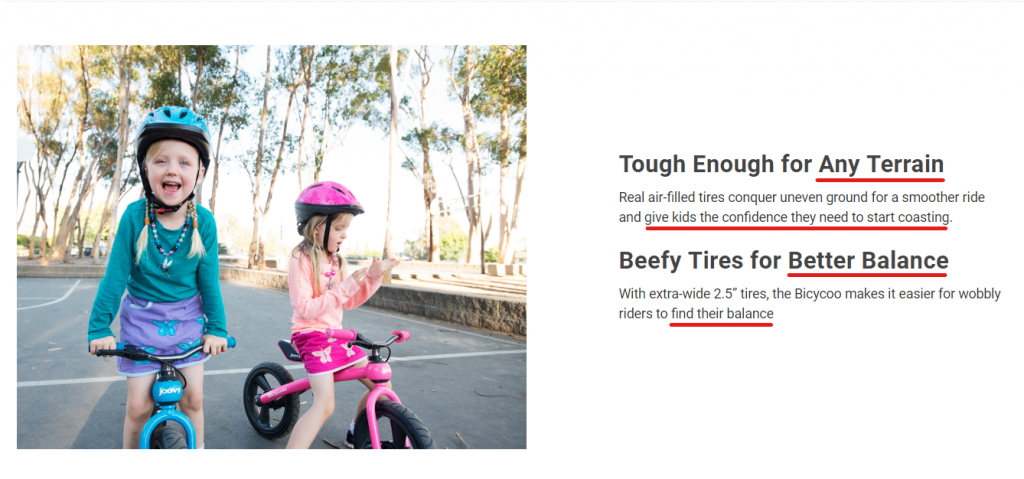
Could your product make the life of your customers better or easier? Will it help them save money and time? Could it help solve any of their problems? Always keep your customers and what they would want in mind.
Step 3: Create your product description
There is no one-size-fits-all product description success formula. There isn’t a magical number of words, phrases, or bullet points that are proven to sell a product better than any other format.
When you pick the best information about your product and turn them into benefits, you want to make sure your visitors consume them in a way that makes them feel like the product is for them and exactly what they need.
Follow these tips to tweak your product description:
#1 Show information in a clear format to make it easy to scan and skim. Include bullet points, short paragraphs (each has a few sentences), lots of white space, and different size fonts.
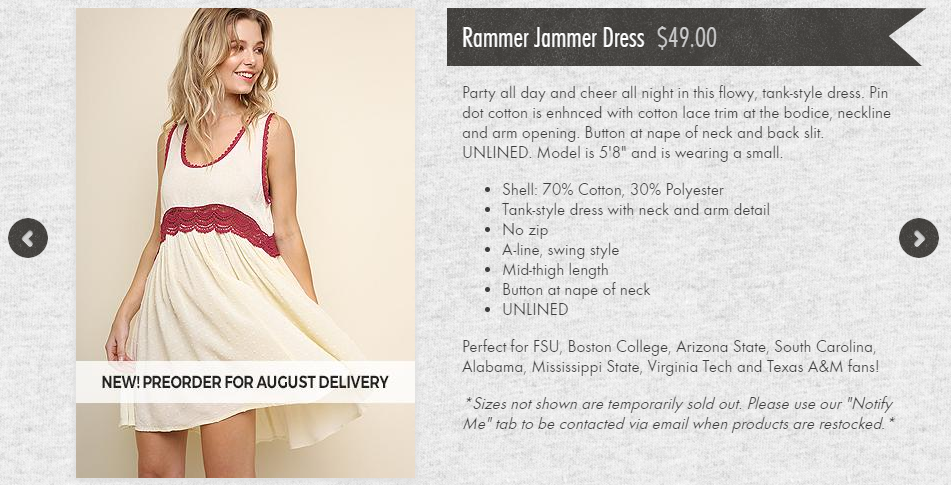
Source: Twelve Saturdays
#2 Use GIFs/videos to display your products in action. In doing so, your potential customers can quickly grab how your product works and its benefits.
#3 Optimize your description for mobile viewing. About 79% of mobile users bought products online using their smartphone in the last 6 months. The number is huge, right? So, don’t miss this opportunity.
#4 Use natural language and tone. Does your description sound like a real conversation between you and your friend or a computer-generated string of words? If it isn’t something that you want to say to your friend about your product, you should inject a little life to it.
Take a look at Nasty Gal. The brand uses the tone of “fun, loving girlfriend” throughout their store, even in the product titles. For example, rather than selling a regular dress, they’re selling a sassy dress that one young woman might recommend to another.
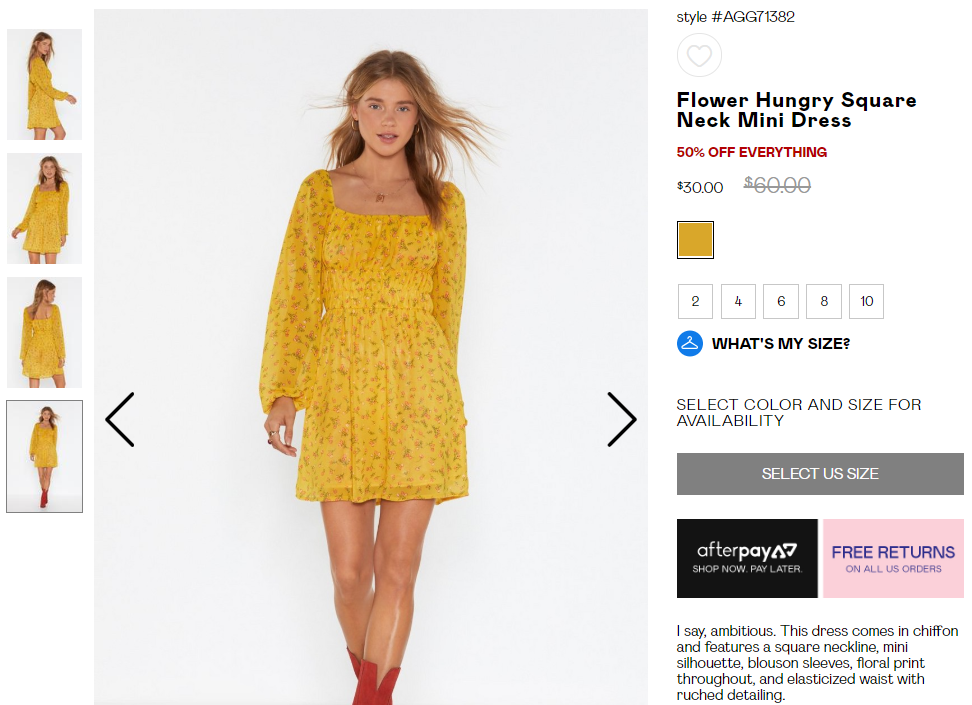
If you look through the store, you’ll see this girlfriend tone is carried throughout the site, from the product titles, descriptions, to color schemes. Even the name of the company “Nasty Gal” is no exception.
Pro tip: A good product description should leave no question answered. When you finish writing it, show it to someone else who has already bought a similar item. Check if he/she has any questions, uncertainties, or requirements that can help improve your description.
Product description: from good to best
Now that you’ve created a good product description you always long for. But how about using some tweaks to make it the best, instead of just always being good?
We’ve got you covered! Here are 10 hacks to make a huge change for your description.
1. Avoid yeah, yeah phrases
A yeah, yeah phrase is a phrase that is overused and does little to build on why a customer should purchase your product. For instance, when you’re stuck for words and don’t know what else to add to your product description, you often end up adding something like “the excellent quality” or “the best thing you’ve ever bought”. As soon as visitors read those phrases, they may wonder why, “who says?” or, think like “yeah, yeah, of course, I heard this several times.”, and then leave your store.
Try to mention the features and benefits of the product instead of its quality directly. In doing so, you can create an impression for your visitors with your product without using any kind of exaggeration.
2. Justify using superlatives
You can use superlatives if you prove why your product deserves the best quality or excellent service. Quote a customer, an expert or anyone else who says your product is the best they ever used or mention specific figures to build trust.
Here is a great example from hardgraft.
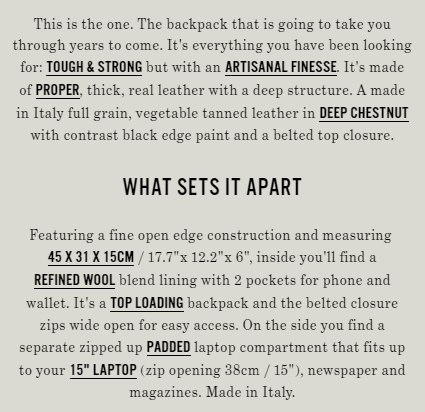
Alternatively, you can use a superlative in a question. For example, “Could this be the highest quality service in LA?” A question mark makes you sound a little humbler.
Note: Always be careful with over-hypes sales copy. Your customers can detect even a small hint of slick sales speak.
3. Appeal to shoppers’ imagination
Wayfair dis a good job of sparking their customers’ imaginations through storytelling. Take this hanging pendant as an example.
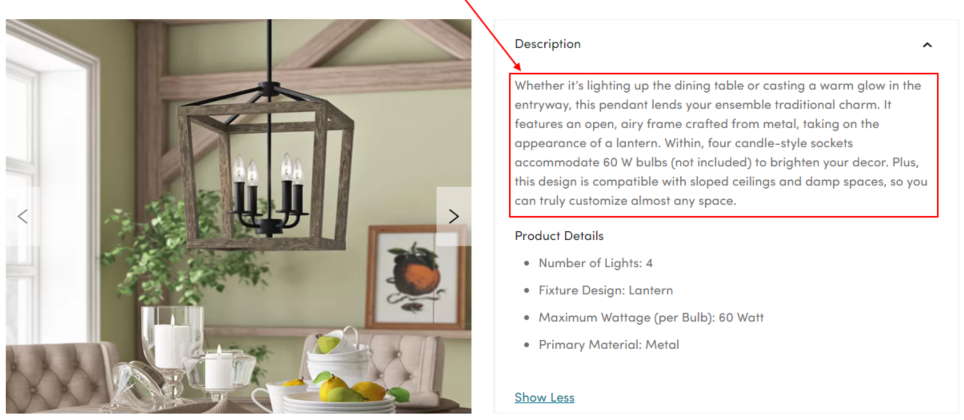
Source: Wayfair
Instead of writing a generic description of a pendant and showing its features, they start with “Whether it’s lighting up the dining table or casting a warm glow in the entryway”. This immediately made any visitor imagine hosting a dinner party, and this beautiful light hanging above.
You are selling online products. As such, your potential customers can’t actually touch your product before they buy it. It’s up to you to get their imagination running wild with all the possibilities of what your product will look like and how it will make them feel. More specifically, tell a story that will sell.
4. Seduce with sensory words
Sensory words are powerful. They make your shoppers see, hear, smell, taste, or feel your words, which can get them to take action. Why? It’s because when they read your sensory words, different areas of their brain light up. Their brain processes those words as if they taste a sweet candy, as if they see a dazzling display of lights, as if they touch a silky cloth. Restaurants have known this for a long time, proved by the fact that people can’t resist ordering when reading their menus.
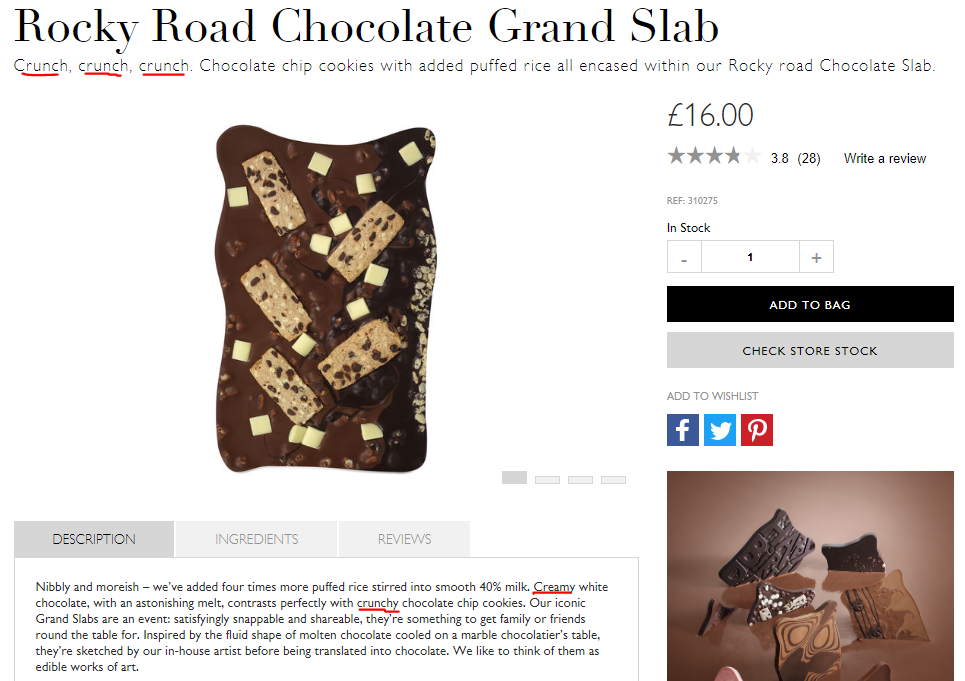
Hotel Chocolat used sensory adjectives not to refer to taste, but also to sound: crunchy.
Sensory words are descriptive. Use the following to apply them when writing your product description:
- Words related to sight indicate colors, shape, or appearance, such as gloomy and bright.
- Words related to touch describe textures. Use them to describe feelings and abstract concepts like gritty, creepy, slimy.
- Words related to hearing describe sounds like crashing, crunching, tingling.
- Taste and smell are closely related. Most taste and smell words are easy to substitutes for bland words like good, nice, bad. For example, sweet, stinky.
- Motion is also sensory. Use active words or describe movement to help your customers experience your words. For example, vibrating, soaring, mind-boggling.
5. Tempt with social proof
Here is a solid fact: Almost 9 out of 10 people read reviews (a form of social proof) to find out if a store is a trustworthy online seller.
There are many types of social proof (not only reviews) that you can take advantage of to grow your business. For example, you can show media coverage you’ve gained like this:
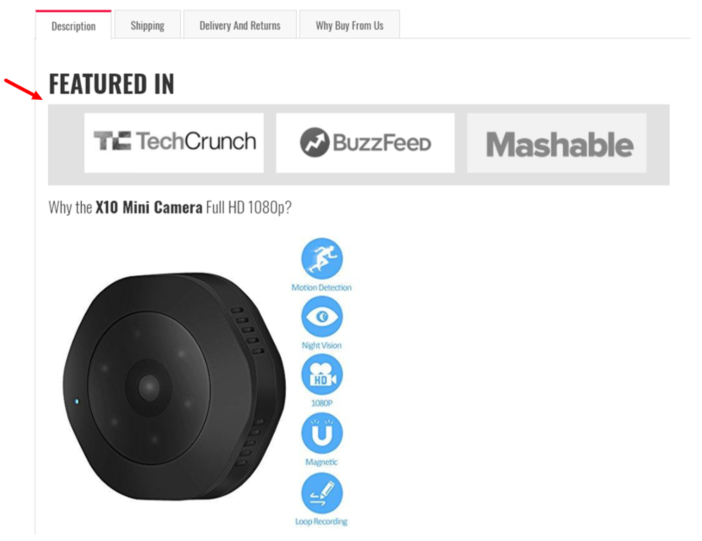
Source: Gadgetox
Or, include a quote like the way Studio Neat does:

Besides, it’s good to show the number of orders you’ve had or the number of times your product has been sold to your description. This way, when someone visits your store and sees those figures, they’ll more likely buy a product because they know other people already made orders.
6. Use humor to engage shoppers
You may see a lot of brands use humor on their sites, in their content, in their advertisements, and more. There is a reason why they do that: a study found that retention of humorous content was significantly higher than non-humorous six weeks after exposure.
Dollar Shave Club, for example, has been using humor to sell their products for years. Below is the description of their Hydrating daily face cleanser product. In this example, they use a clever saying of “respect your face” to insinuate that using their product is a way not only to protect your face but also to show your respect for it.
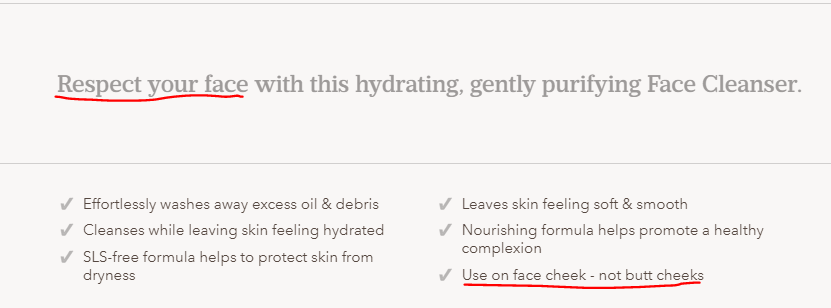
It’s common when a bunch of cosmetic brands uses the standard “use on face cheek” line. Not Dollar Shave Club. “Not butt cheeks” is much more on-brand and memorable.
Note: Using humor isn’t always good. Too much humor, and it can break your business. Too little humor, and it won’t bring the effect you want. Try to do humor right like Dollar Shave Club.
7. Focus on shoppers’ biggest pain points
If you sell something that a lot of other people are selling, you need to write descriptions which are more than just some clever sentences.
Why? Because if you don’t speak to your customers’ deepest fears and pain points, how could you get them to buy your products? The answer is NO WAY!
It’s time you need to gain a full understanding of your ideal customers’ psychographics. What motivates them to buy? Where do they spend their time online? What do they struggle with? How do they describe your products? What are their objections, goals, and fears? What makes your product differ from your competitors’?
Let’s see how BearSumo applies this technique when they sell 3 IN 1 BearFlash™️ USB Drive:
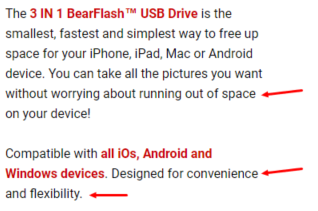
Notice the way they talk about “free up space” (“running out of space”) and “convenience” (“smallest, fastest, and simplest”) – two pain points faced by all smartphone users who love taking photos every time, everywhere. They’re not done there, however.
If you still aren’t convinced that this USB is perfect for you, they also include an image of the product’s storage expansion to match.
Now you may be convinced!
Tip: Address directly what your potential customers are looking for most in a product which is similar to yours. Then, focus on pain points that your product solves better than your competitors.
8. Add links to similar products
Sometimes, when people are reading the description of a product, they may look for similar items as well. That’s why you should ensure you add links to other products (if necessary) in each product description.
Use your product descriptions as an opportunity to link to other products in your store. This would be a perfect match for this product – as an upsell or cross-sell.
Over to you!
Writing a good (not to mention the best) product description takes (a lot of) work. The only way to make your great one is to try several things until you find something that truly works for your business. Start going out and do it!